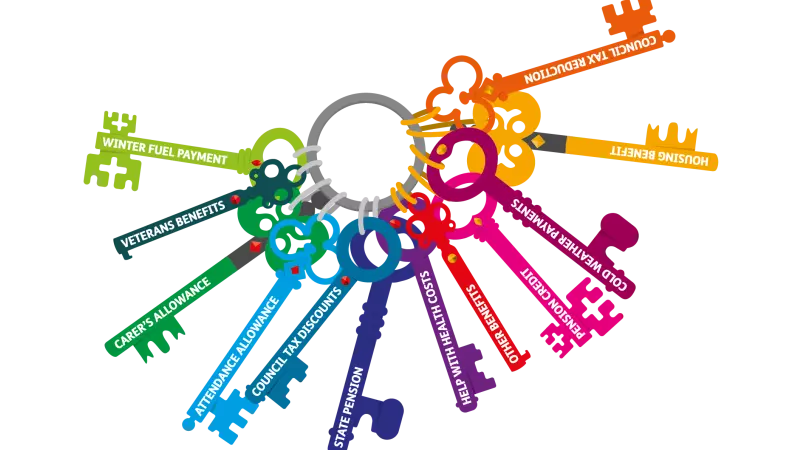Blog: It's a shed, Jim, but not as we know it
Earlier this year, Age Scotland brought Shedders from across Scotland together (virtually of course) to share their experiences of lockdown and plans for a safe return to activities when the Scottish Government Route map allows.
Following meetings with Men’s Sheds Networks in the Lothians; Ayrshire; Perth and Kinross; Highlands and Islands; Dundee and Angus; and Aberdeen and Aberdeenshire, our Men’s Sheds community development officer Tim Green tells us how Shedders across Scotland have responded to the changes and challenges posed by COVID-19.
Experience of lockdown
Sheds reported that lockdown had taken them by surprise, with most committees making the difficult decision to close Shed doors in March. Due to access restrictions, many were left without the opportunity to organise departure or collect up-to-date contact details of members.
Staying at home for this extended period has highlighted the importance of Shed communities to members mental health and wellbeing, and the setbacks members face when accessing these shared spaces just isn’t feasible. It’s clear that Shedders are missing the routine, camaraderie and sense of purpose and value sheds offer and are desperate to get back as soon as it is safe to do so.
Keeping up connections
From telephone calls to buddy systems, WhatsApp groups to newsletter, each Shed has had their own methods of maintaining regular contact and connection between members.
Video conferencing has become key to keeping a Shed-like atmosphere alive during lockdown and beyond, with platforms such as Zoom enabling members to take part in virtual quiz nights, coffee mornings, equipment demonstrations and even comedy and music-making.
In smaller communities and for those without internet access, door knocking or good old-fashioned shouting up at windows while taking physically distant exercise or shopping enabled Sheds to check in with folk they were unable to contact by other means.
Lockdown projects and activities
Tools, portable equipment and materials were taken home or distributed by some sheds, enabling members to keep busy with creative projects such as building bird tables for care homes or eco planters for local communities and schools. Digital champions offered computer-mediated communication tutorials and art and hobby packs were distributed to tackle boredom.
While most are retired from their day jobs, volunteers from Men’s Sheds have found a critical role in supporting their communities and key workers during the pandemic.
For example, including those in the Borders, heard that frontline key workers were short of personal protective equipment (PPE), they were determined to answer the call to help. They have used donated materials to produce thousands of plastic face visors for workers across the region and beyond.
Other Shedders supported food growing projects, volunteered for COVID resilience and mutual aid groups to distribute food and collect shopping and prescriptions, and embarked on home-based fundraising activities like sponsored laps of the garden or donating £1 for every cuppa supped in the Zoom Room.
The future of Scotland’s Sheds
Sheds felt the most important lesson was to keep connected and have the confidence that no member of the shed is left out. They recognised some of the membership may need more support than others, particularly those shielding and in order to maintain these connections, it is necessary to keep comprehensive up-to-date membership details that are GDPR compliant.
With such a strong focus on technology over the past few months, digital communication gaps are being addressed by securing funding for awareness and skills training if there is not the expertise among members. As well as setting up a tool library for home-based projects, sheds are thinking of establishing digital technology libraries for those without access.
Sheds are also fitting CCTV to ensure security.
Reopening shed doors
While members are keen to return, a cautious approach has been adopted guided by the Scottish Government’s Route Map. Sheds recognise that a large proportion of their members are in high risk groups because of their age or underlying conditions and will continue to use current contact methods to keep those who do not feel confident leaving their homes connected.
COVID safe protocols, surveys, risk assessments, one-way systems and signage are being developed. Outdoor spaces will be utilised for physically distant meet ups, and funding is being secured for PPE. Going forward, hand and respiratory hygiene etiquette will be essential.
Some Sheds are proposing limiting numbers through booking systems and increasing the number of sessions accordingly, while others are assigning COVID welfare officers. These roles will come with a health warning, as those taking them on may encounter increased conflict and stress.
There is a clear consensus that, even when it is safe to return, Sheds will look and feel very different. However, by bringing Shedders together for these meetings, we hoped to encourage collective problem solving and recognise the hard work that has been going on behind the scenes.
Those who took part in Age Scotland’s meetings reported that, apart from missing the sandwiches and visiting exotic shed locations, the virtual sessions were extremely useful, worthwhile, interesting, and informative.
Participants stated that it was helpful to hear the experiences and ideas of different sheds and reassuring to find that they were thinking along the same lines.
To find your nearest Shed visit the Scottish Men’s Sheds Association 'Find a Shed' web page at www.scottishmsa.org.uk/find-a-shed or contact Tim Green on 01383 882 151, 07718 579 291 or tim.green@agescotland.org.uk.


